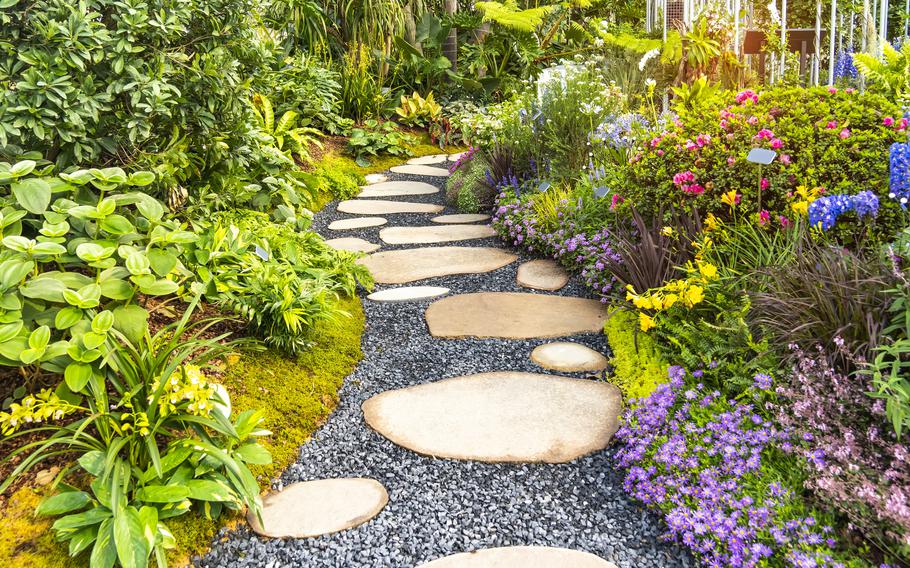
(iStock)
“I like this one,” I told my husband of eight months while inspecting an empty house on Fort Ord in California in 1994. The exterior was drab beige with dull brown trim, just like the other Army houses. But this one had something different.
Like the rest, it was coated in countless layers of government paint, the kitchen contained worn appliances and cheap Formica countertops, the heavy closet doors didn’t slide smoothly on their ancient tracks, and the concrete “patio nook” was a haven for spiders.
However, the house sat at the breezy top of Ardennes Circle like a sentinel, shaded by an enormous Monterey Pine. On the southwest corner of the house grew a tall shrub with fiery red bottlebrush flowers drooping from its branches. The best part was behind the house, where the scrubby lawn met a weedy, thorny, perimeter separating base housing from a vast abandoned weapons range, and rumored mountain lions prowled among undischarged munitions.
There on the edge of unknown dangers was a tiny fenced garden. A four-foot square of dry earth enclosed with ramshackle posts and chicken wire. It appeared that the last tenant hadn’t used the garden, allowing vines to invade. Another tour of duty without caretaking, and the little pen would’ve disappeared into the enveloping brush.
I saw potential. As a newly married Navy wife who’d come from a cramped DC Beltway apartment, I had a vision. To me, our new home would be a comfy place where things were made from scratch, and a vegetable garden fit perfectly into my cozy cross-stitched picture.
The only problem was, I wasn’t a gardener. Or cook, or cross-stitcher for that matter.
Nonetheless, I dug into my garden with vim and vigor, planting seedlings of peppers, tomatoes, and squash without bothering to read instructions about zones, planting distances, watering needs, or fertilizing. I assumed that plants thrived in the fertile land of Gilroy garlic and Castroville artichokes.
I don’t recall how long it took for those vegetables to die, but they lived long enough for me to paint an intricate sign reading “Lisa’s Garden” — letters shaped from colorful painted eggplants, carrots, tomatoes, broccoli and zucchini.
That sign went with us to Joint Analysis Center, Molesworth, England, where it hung beside another four-foot patch behind our rented house. We’d moved in on a cold, rainy February day, so I began composting kitchen scraps in the plot, envisioning rich soil in a few months.
But I was busy with a one-year-old son, and never managed to plant vegetables that spring. Mother nature took mercy, performing a small miracle. Tomato seeds from my composted kitchen scraps sprouted that June and grew into a massive tangle. Though unintended, I’d grown a productive garden patch.
Three tomato-rich years later, we moved to a Dutch colonial on a cul-de-sac in Virginia Beach, shaded by towering loblolly pines. Without a sunny plot, I hung my garden sign near the curb and lined up potted vegetables in the gutter. When my “gutter garden” failed, my neighbor took mercy, sharing her extensive backyard garden, complete with raised beds, a watering system, and plant supports.
At Patch Barracks in Germany, “home” was a fifth floor walk-up apartment, but the pot of wilting basil on my kitchen windowsill just didn’t cut it. So, I nominated myself “Stairwell B Gardener,” planting perennials beside the stoop, brightening the otherwise bleak communist-era building with a splash of cheerful color.
While in Naval Station Mayport, Fla., housing, I resorted to container gardening on the lanai, which produced only a few deformed tomatoes, but in Naval Station Newport, R.I. housing, I yielded my best harvests from an overcrowded triangular plot in our fenced backyard.
Finally, Francis retired from the Navy, and we bought a house where I’ve been planting gardens ever since. Problem is, I’m still not much of a gardener. Or cook, or cross-stitcher for that matter.
It’s OK; I never really planted gardens to grow vegetables. No matter where the military sent our family to live, we planted ourselves and made it our home, rooting, blooming, and living life. Gardening was my way of nurturing hope within ourselves, and growing my belief in tomorrow.
Read more at themeatandpotatoesoflife.com and in Lisa’s book, “The Meat and Potatoes of Life: My True Lit Com.” Email: meatandpotatoesoflife@gmail.com